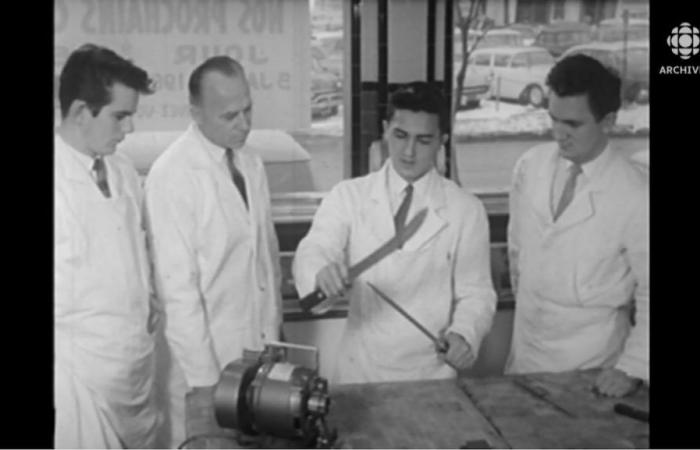It’s barbecue season for grill enthusiasts. Meat consumption habits have changed since the 1960s and the same is true for the professions of butchers and charcutiers.
A history of butchery
On March 18, 1961, host Richard Pérusse presented a long report on the butcher’s profession on the show Orientation.
Host Richard Perusse mentions statistics on meat consumption and the number of animals slaughtered. It paints a portrait of the training and profession of butcher.
The report returns to the history of the butchery.
If you don’t want to be cold, our grandfathers said, you have to eat hard. In the past, each family waited for the cold to set in to butcher. Each resident bled, cut and smoked their meat in preparation for the holidays and winter.
In his report, the journalist mentions that in the early 1960s, Canadians ate an average of 68 kg of red meat per year. A figure which has fallen significantly, standing around 41 kg today. Poultry consumption has become increasingly important.
The presenter paints a picture of the training and profession of butcher.
From 1950, in Quebec, apprentice butchers learned their trade at the Montreal Meat Institute, one of the first schools of its kind in Canada.
In the report, we see future butchers studying animal anatomy.
A pork butt becomes a ham, a leg, a shank, a femur, a round bone. […] The young butcher must know by name each of the pieces he is called upon to sell. Few housewives would put a filet mignon on a quarter of beef, but everyone asks for it.
The butcher must assess losses at a glance and try to be as precise as possible in his cutting to avoid them.
The journalist also recalls the important role of cured meats.
Today we eat more bacon, cold cuts, ham and smoked sausages than fresh meats.
Family butchers
August 15, 1996 on the show Simply lifeEmmanuel Bilodeau meets the Italian butcher Benito.
Dreaming of being a cowboy, Benito became a butcher: he knows cattle like the back of his hand. Narrator: Emmanuel Bilodeau.
This butcher, as colorful as he is passionate, shows his boys how to cut pieces of meat. The recipe for Italian sausages and the spices used to make them will remain a family secret.
I, all my secrets, all my knowledge, I only transmit it to my sons.
In Ottawa, the Weatherall butcher shop is also a family affair.
Report by Christian Millette on Weatherall butchery, a family business in the Vanier district of Ottawa.
On May 13, 2006, the broadcast It’s worth the detour introduces us to its owner Irene Weatherall, then aged 82, who still serves her customers with her two sons.
Commerce has been part of the Vanier district landscape for more than sixty years.
The mobile butcher
April 16, 2010 on the show That’s lifejournalist Isabelle Lavigne accompanies a traveling butcher.
Daniel Morel, a beef producer in Quebec, decided to expand his activities from farm to fork. He is also a traveling butcher in Estrie. Journalist Isabelle Lavigne.
Daniel Morel goes directly to the consumer by offering his products from a trailer attached to his vehicle, his mobile meat counter.
I like direct contact. I’m happy to see the world and I’m happy to explain my products.
The butcher goes to local markets or directly to an individual who brings together a few neighbors.
Many consumers appreciate this proximity to the producer.
End of widget. Return to start of widget?







